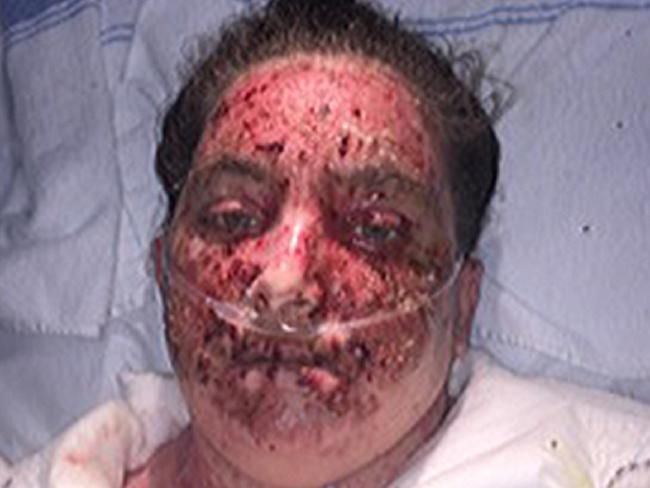Eczema Treatment Gone Wrong: Woman Burns 98% Of Body After Soaking In Too Much Bleach

You’ve heard there are clinical creams and natural home remedies to treat eczema, a dry skin condition that reportedly affects between 10 and 12 percent of children around the world — but what about bleach bath therapy? Soaking in bleach doesn’t sound at all like a good idea, but according to the American Academy of Dermatology (AAD), adding about six percent of regular, not concentrated bleach to bath water can help soothe a person’s symptoms. So how did a common treatment send Sarah Cole, 29, to an Australian hospital with severe, life-threatening burns? She used too much bleach.
Cole told The Daily Telegraph that she had been skeptical of her skin specialist when it was suggested she take a bleach bath as a way to treat her eczema. She, as we imagine many people would, thought “that’ll burn like crazy.” But when her specialist insisted upon the bath, Cole decided to give it a try.
Not having specified how much bleach she should use, Cole added one cup of the stuff to her bath and soaked her entire body in it. She admitted during her bath there was some pain, but not a lot. Two days after her bath, however, Cole woke up shaking.
“I couldn’t walk, I couldn’t talk so my partner called the ambulance and I was taken to hospital where I was taken to ICU,” Cole said. “Two and a half weeks later I was taken to Concord Hospital in Sydney where thankfully they saved my life."
Cole spent a month in intensive care and a burn unit at Concord after severely burning 98 percent of her body. At one point, she said her family was “pretty much planning my funeral.” Even now that she’s been discharged from the hospital, Cole is trying to manage lingering emotional pain, as well as “a lot of horrible scars.”
Her family has set up a FundRazr to help raise money they can put toward Cole’s medical bills.
Cole did say she looked up bleach bath therapy after she was out of the hospital to find it was, in fact, a legitimate treatment. One study published in The Journal of Dermatology concluded bleach baths significantly reduced eczema area and severity. But Cole also found experts recommended these baths are beneficial when using a quarter of the amount of bleach she used; some sources stated over a half a cup of bleach is enough to cause severe damage.
Let’s be clear: anyone with eczema should speak with their dermatologist before taking a bleach bath therapy. But generally speaking, the AAD suggests a half cup of regular bleach can be added to a full bathtub of water for eczema relief; only add a quarter cup to a half-full tub. This amount is even less for babies and toddlers: the AAD recommends using a single teaspoon of bleach for every gallon of water.
Both children and adults should never add the bleach directly to their skin. The bath should be drawn, the bleach added, before anyone soaks for five to 10 minutes; again, a dermatologist will suggest how long someone should sit in bleach. Once that’s done, the next and final step is to pat skin dry before applying any topical cream.
What exactly does the bleach do to your skin? The American Academy of Allergy Asthma & Immunology (AAAAI) reported one of many triggers for eczema is a bacterium called Staphylococcus aureus. These bacteria can frequently infect the skin of people with eczema, so the bleach works to decrease the rate of this infection. The AAAAI offers similar guidelines to the AAD, adding patients should limit bleach baths to no more than twice a week. Also, try to soak only torsos and otherwise affected areas; do not submerge your head.
Seriously though, call your dermatologist.
Published by Medicaldaily.com



























